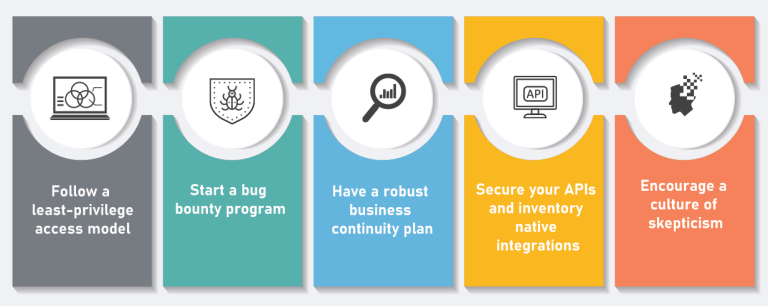Introduction:
Web apps, which provide convenience and usefulness, have become an essential component of our digital lives. They are, nevertheless, vulnerable to a variety of vulnerabilities that can jeopardize data security and expose organizations to considerable dangers. In this detailed book, we will look at practical strategies to reduce web application vulnerabilities and improve overall security.

Secure Development Practices:
- Secure Coding Standards: From the beginning of the creation process, prioritise secure coding practices. Implement policies for input validation, output encoding, and sensitive handling of data.
- OWASP Top Ten: Learn about the OWASP Top Ten, which is a list of the most critical online application vulnerabilities. Ascertain that your development team is aware of these risks and understands how to avoid them.
- Security Training: Provide developers with frequent security training that emphasises secure coding practices and common attack vectors. Encourage a security-conscious culture among the development team.
Input Validation and Output Encoding:
- Whitelist Input Validation: Implement tight input validation by specifying allowed user input ranges and formats. Use whitelist validation to clearly specify acceptable characters and reject any input that does not meet the stated requirements.
- Parameterized Queries: To prevent SQL injection attacks, use parameterized queries or prepared statements. This method ensures that user input is handled as data rather than executable code.
- To prevent cross-site scripting (XSS) attacks, use the correct output encoding methods. To avoid harmful malware, encode user-generated or dynamic material before displaying it on web sites.
Authentication and Access Control:
- Strong Authentication: Implement robust authentication mechanisms, such as multi-factor authentication (MFA) or strong password policies. Utilize secure hashing algorithms to store passwords securely.
- Session Management: Enforce secure session management techniques, including session timeouts, secure session cookies, and protection against session fixation attacks. Regularly rotate session IDs to mitigate session hijacking risks.
- Role-Based Access Control (RBAC): Implement RBAC to restrict user privileges based on their roles and responsibilities. Assign the minimum required permissions to each user, following the principle of least privilege.
Regular Security Testing:
- Vulnerability Assessments: Conduct routine vulnerability evaluations using both manual testing and automated scanning technologies. This aids in finding vulnerabilities and fixing them before attackers may use them.
- Penetration testing: Perform thorough penetration tests to model actual attacks and gauge the efficiency of security measures. Use reliable open-source tools or expert penetration testers to carry out these tests.
- Code Reviews: Conduct regular code reviews to find security holes, coding mistakes, and potential vulnerabilities. To make sure that security considerations are an essential part of the development process, encourage peer code reviews.
Secure Configuration and Patch Management:
- Server and Infrastructure Hardening: Use strong encryption methods, disable unused services, and use security best practices to setup servers, databases, and network components securely.
- Patch Management: Keep a strong patch management procedure in place to quickly apply security updates and fixes to all web application stack components. Apply updates as soon as they become available, and regularly check for vendor security warnings.
Web Application Firewalls (WAF) and Security Monitoring:
- Web Application Firewalls (WAFs): Use a WAF to offer an extra layer of defense against frequent threats. Set up the WAF rules to thwart known vulnerabilities by filtering and blocking malicious traffic.
- Real-time security monitoring: Install a complete security monitoring system with log analysis, intrusion detection, and incident response features. Keep an eye on user activity, system logs, and network traffic to spot any unusual activity and act quickly to address any dangers.
Conclusion:
Preventing web application vulnerabilities requires a proactive approach that encompasses secure development practices, regular security testing, and robust security controls. By adopting secure coding standards, implementing input validation and output encoding techniques, strengthening authentication and access controls, and conducting regular security testing, organizations can significantly reduce the risk of web application vulnerabilities. Additionally, maintaining secure configurations, promptly patching software and components, and implementing web application firewalls and security monitoring solutions add further layers of protection.
Reference:
How to Secure Web Applications From Vulnerabilities in 2023 (mobidev.biz)
8 Critical Web Application Vulnerabilities and How to Prevent Them (brightsec.com)
For further clarifications or support, please write to contact@paradigmitcyber.com

